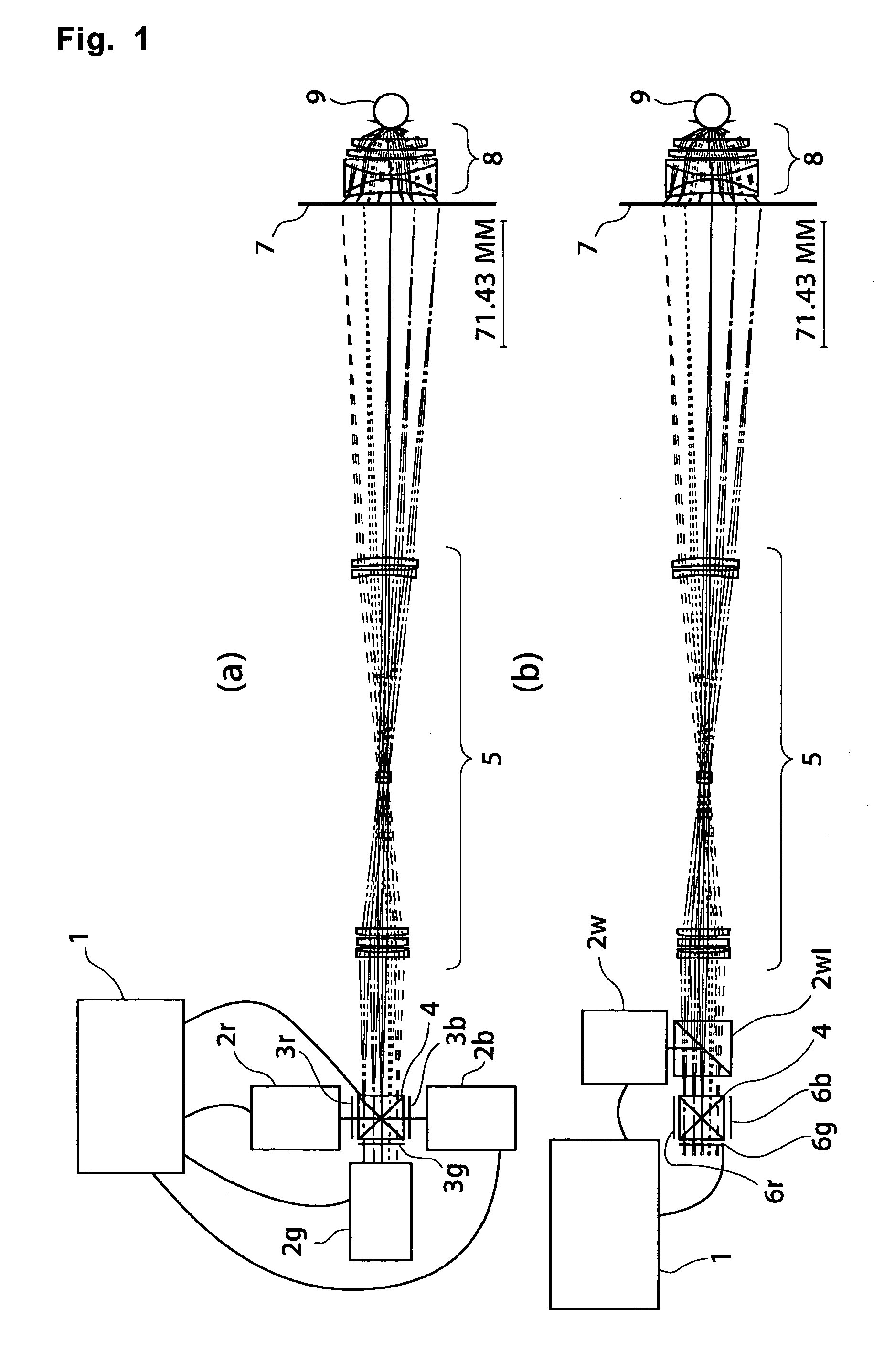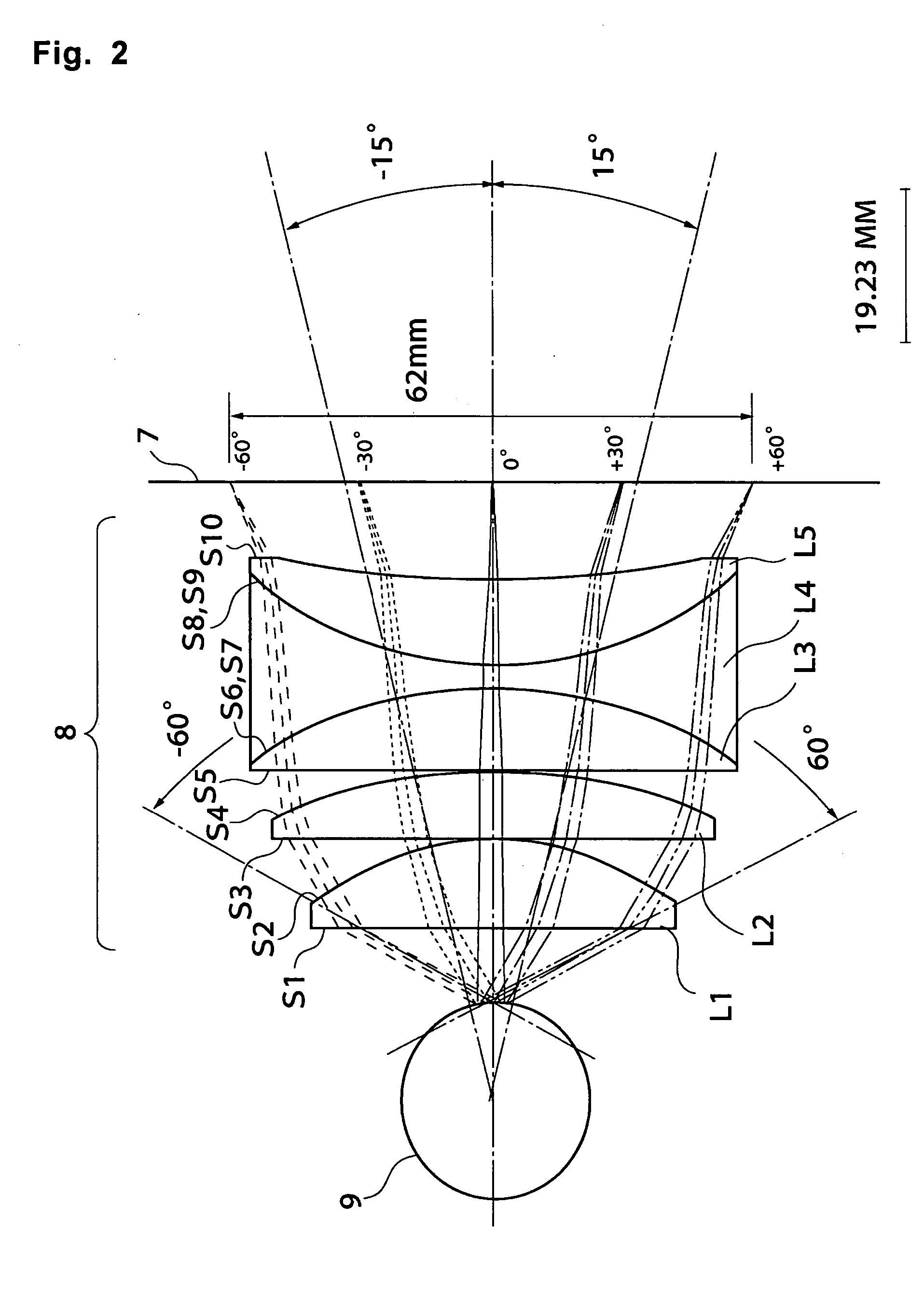Image display device and simulation device
a display device and simulation device technology, applied in the field of image display devices and simulation devices, can solve the problems of impaired limited size of liquid crystal devices, and not much adopted as game machines or simulation devices, so as to enhance the sense of reality and absorption
- Summary
- Abstract
- Description
- Claims
- Application Information
AI Technical Summary
Benefits of technology
Problems solved by technology
Method used
Image
Examples
Embodiment Construction
[0122] In the following, examples of the mode for carrying out the present invention will be described, referring to the drawings. In the embodiments of the present invention shown below, an image display device using an eyepiece type magnification optical system similar to that of the image display device shown in FIG. 26B is used. However, because such an image display device system as mounted on the head as shown in FIG. 26B is limited with respect to its weight as described earlier, it is configured such that the image display device is supported by a portion other than the user and thus the image display device is allowed to be heavier.
[0123] In addition, because regarding a system in which, like the eyepiece optical system as is generally used in FIG. 26B, a pupil position is located inside the magnification optical system and in which a liquid crystal display device is positioned in a position conjugate with the retina of the eyeball, light beams of which principal ray is in...
PUM
 Login to View More
Login to View More Abstract
Description
Claims
Application Information
 Login to View More
Login to View More - R&D
- Intellectual Property
- Life Sciences
- Materials
- Tech Scout
- Unparalleled Data Quality
- Higher Quality Content
- 60% Fewer Hallucinations
Browse by: Latest US Patents, China's latest patents, Technical Efficacy Thesaurus, Application Domain, Technology Topic, Popular Technical Reports.
© 2025 PatSnap. All rights reserved.Legal|Privacy policy|Modern Slavery Act Transparency Statement|Sitemap|About US| Contact US: help@patsnap.com



